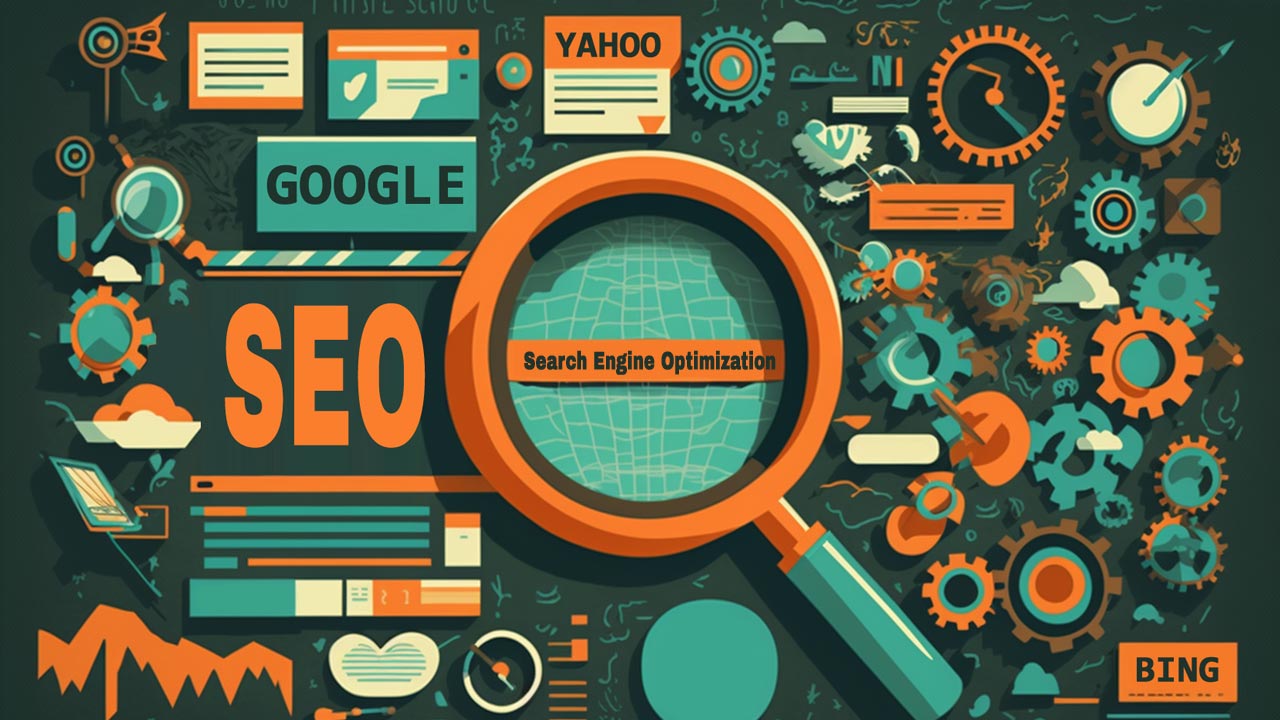Having an online presence is essential for businesses and individuals alike. However, with the growing number of websites and content available, being visible in search engine results is more important than ever. This is where Search Engine Optimization (SEO) comes into play. In this comprehensive article, you will learn the ins and outs of SEO, its importance, and various techniques to improve your website’s search engine ranking.
SEO is the practice of optimizing a website to rank higher in search engine results pages (SERPs). This involves modifying website content, structure, and other elements to make it more appealing to search engines like Google, Bing, and Yahoo. By doing so, a website can attract more organic (non-paid) traffic and ultimately increase its visibility, credibility, and reach.
Throughout this article, you will gain valuable insights into the world of SEO. We will cover essential topics such as keyword research, on-page and off-page optimization, technical SEO, and the importance of quality content. You will also learn about the latest trends and best practices in the industry, as well as various tools and resources that can help you in your SEO journey. By the end of this article, you should have a solid understanding of SEO fundamentals and be well-equipped to optimize your website for search engines.
Table of Contents
- Introduction to SEO
- Keyword Research
- On-Page Optimization
- Off-Page Optimization
- Technical SEO
- Content is King
- SEO Tools and Resources
- Final Thoughts
Introduction to SEO
What is SEO?
Search Engine Optimization (SEO) is a collection of techniques and practices aimed at enhancing a website’s visibility and ranking in search engine results pages (SERPs). By optimizing a website for search engines, it becomes more likely that users searching for relevant terms will find and visit your site. SEO involves several factors, including keyword research, on-page optimization, off-page optimization, technical SEO, and content creation.
Why is SEO important?
SEO is crucial for several reasons:
- Visibility: With millions of websites on the internet, it is essential for a site to rank higher in SERPs to stand out from the competition and attract potential users or customers.
- Credibility: Websites that rank higher in search results are often perceived as more trustworthy and credible by users.
- Organic Traffic: Higher rankings lead to more organic, non-paid traffic, which is generally considered more valuable than paid traffic.
- User Experience: SEO practices often improve a website’s user experience, making it more appealing and user-friendly.
- Cost-Effective Marketing: SEO is a cost-effective marketing strategy, as it targets users who are actively searching for relevant products, services, or information.
Keyword Research
Understanding Keywords
Keywords are words or phrases that users type into search engines when looking for information, products, or services. Identifying the right keywords is a crucial aspect of SEO, as targeting relevant and high-traffic keywords can significantly increase your website’s visibility.
Keyword Research Tools
Several tools can assist in keyword research, including:
- Google Keyword Planner: A free tool from Google Ads that provides keyword ideas and search volume data.
- Ahrefs Keywords Explorer: A comprehensive keyword research tool that provides keyword suggestions, search volume, keyword difficulty, and more.
- SEMrush: Another popular keyword research tool that offers keyword suggestions, search volume data, and competitive analysis.
Long-tail Keywords
Long-tail keywords are longer and more specific keyword phrases that users search for. While they generally have lower search volume, they tend to have higher conversion rates, as they target users with more precise intent.
Keyword Intent
Keyword intent refers to the user’s purpose behind a search query. Understanding keyword intent can help you create content that aligns with the user’s needs and expectations, increasing the likelihood of ranking higher in search results.
On-Page Optimization
On-page optimization involves making changes to individual pages on your website to improve their performance in search engine rankings. This includes optimizing content, meta tags, images, and internal linking.
Meta Tags
Meta tags are HTML elements that provide information about a web page to search engines and users. They play a crucial role in SEO, as they help search engines understand the content and purpose of a page.
Title Tags
Title tags define the title of a web page and are displayed in search engine results and browser tabs. They should be descriptive, concise, and include your target keywords.
Meta Descriptions
Meta descriptions are short summaries of a web page’s content and are displayed below the title in search engine results. They should accurately describe the page’s content and include relevant keywords to entice users to click on your website.
Header Tags
Header tags (H1, H2, H3, etc.) are used to structure content on a web page and indicate the hierarchy of headings and subheadings. They should be used appropriately to make your content easy to read and understand, and should also include relevant keywords.
URL Structure
URL structure is an essential aspect of on-page optimization. URLs should be descriptive, include relevant keywords, and use hyphens to separate words for better readability.
Image Optimization
Optimizing images on your website can improve page load times and enhance the user experience. Image optimization includes compressing images without sacrificing quality, using descriptive file names and alt tags, and using the appropriate image format (such as JPEG or PNG).
Internal Linking
Internal linking refers to linking from one page on your website to another. By using internal links, you can help users navigate your site more efficiently and improve the overall structure of your website. Internal linking also helps search engines crawl and index your site, as well as understand the relationships between different pages.
Off-Page Optimization
Off-page optimization involves activities that occur outside your website but still affect its ranking in search engine results. These activities primarily include link building and social media promotion.
Backlinks
Backlinks are incoming links from other websites to your site. They are crucial for SEO because they act as a vote of confidence from one site to another. High-quality backlinks from reputable sites can significantly improve your website’s ranking.
Quality vs. Quantity
When it comes to backlinks, quality is more important than quantity. A few high-quality backlinks from authoritative websites will have a more significant impact on your site’s ranking than numerous low-quality links from spammy or irrelevant sites.
Link Building Strategies
Link building strategies can help you acquire high-quality backlinks, such as:
- Creating valuable, shareable content
- Guest blogging on reputable websites
- Building relationships with influencers in your industry
- Reaching out to sites that have mentioned your brand but have not linked to your website
Social Media
Although social media links are generally considered nofollow, meaning they don’t directly impact your site’s ranking, having a strong social media presence can indirectly improve your SEO. Sharing your content on social media can lead to increased visibility, brand awareness, and more opportunities for users to link to your content.
Local SEO
Local SEO is the practice of optimizing your website for users searching for products or services in a specific location. This includes creating and optimizing a Google My Business listing, acquiring local citations and reviews, and optimizing your site’s content for local keywords.
Technical SEO
Technical SEO involves optimizing your website’s infrastructure to improve its performance in search engine rankings. This includes enhancing website speed, crawlability, indexability, and security.
Website Speed
Website speed is a critical factor for both user experience and SEO. Slow-loading websites can lead to increased bounce rates and lower rankings in search results. Techniques to improve website speed include optimizing images, using a content delivery network (CDN), and minimizing the use of plugins and scripts.
Crawlability and Indexability
Crawlability refers to a search engine’s ability to access and crawl your website’s content, while indexability refers to the search engine’s ability to include your pages in its search results. To improve crawlability and indexability, ensure that your site has a clean site structure, uses a well-organized sitemap, and avoids using duplicate content.
SSL Certificates and HTTPS
Secure Sockets Layer (SSL) certificates and HTTPS ensure that your website’s data is encrypted and secure. Search engines prioritize secure websites, so implementing SSL and HTTPS can improve your site’s ranking.
XML Sitemaps
An XML sitemap is a file that lists all the pages on your website, making it easier for search engines to crawl and index your content. Submitting an XML sitemap to search engines like Google and Bing can improve your website’s visibility.
Content is King
Content plays a crucial role in SEO, as search engines prioritize websites with high-quality, relevant, and fresh content.
Content Quality
High-quality content is well-written, informative, and valuable to users. Ensuring that your content is of high quality can lead to increased user engagement, social shares, and backlinks, all of which can improve your website’s SEO.
Content Relevance
Your content should be relevant to your target audience and the keywords you’re targeting. Relevant content will attract and engage users who are searching for information, products, or services related to your niche.
Content Freshness
Regularly updating your website with fresh content can signal to search engines that your site is active and up-to-date. This can improve your website’s ranking and help you stay competitive in search results.
Evergreen Content
Evergreen content is content that remains relevant and valuable over time. By creating evergreen content, you can attract long-term organic traffic to your website and establish yourself as an authority in your industry.
SEO Tools and Resources
There are numerous SEO tools and resources available that can help you optimize your website for search engines. Some of the most popular include:
Google Analytics
Google Analytics is a free tool that provides valuable insights into your website’s traffic, user behavior, and conversion data. By monitoring and analyzing this data, you can make informed decisions to improve your website’s SEO performance.
Google Search Console
Google Search Console is a free tool that allows you to monitor your website’s performance in Google search results. It provides information on your website’s indexing status, any crawl errors, and the keywords that are driving traffic to your site.
Screaming Frog
Screaming Frog is a website crawling tool that can help you identify technical SEO issues on your website, such as broken links, duplicate content, and missing meta tags.
Ahrefs
Ahrefs is a comprehensive SEO tool that offers keyword research, backlink analysis, rank tracking, and site auditing capabilities.
Moz
Moz is another popular SEO tool that provides keyword research, site auditing, rank tracking, and backlink analysis features.
Final Thoughts
In conclusion, Search Engine Optimization is a crucial aspect of a website’s online success. By understanding and implementing SEO best practices, you can improve your website’s visibility, credibility, and reach. The most important takeaway from this article is the importance of quality content, as it is the foundation of any successful SEO strategy. Additionally, remember that SEO is an ongoing process that requires constant monitoring, analysis, and adjustments. Stay up-to-date with industry trends and best practices to ensure that your website continues to rank well in search engine results pages.










